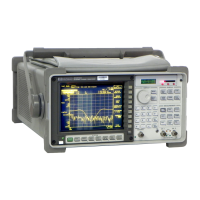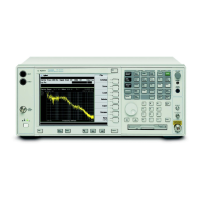To accomplish a post-trigger delay, the analyzer holds off a measurement until
the specified delay time has elapsed. Pre-trigger delay is more complicated.
The analyzer uses a special trigger event buffer that is dedicated to storing
seven time records worth of input data. When the trigger occurs, the analyzer
goes back into this trigger buffer to obtain input data that is older than the
current input data.
Tachometer input There is an input for a tachometer signal on the rear panel of the
Agilent 35670A. This accepts a pulse from a tachometer mounted on rotating
machinery. The tachometer signal is used to trigger the analyzer during order track
measurements.
The tach signal must have a fairly linear region that is stable in amplitude throughout
the RPM range that you want to measure. The tach pulse width need not be constant
because only the leading (or trailing edge) of the tach signal is used. It is not
necessary for the tach signal to have a fast rise-time (sine waves, for example, are
acceptable).
Averaging
An average is a series of combined measurement results that incorporates
anywhere from 1 to 9,999,999 averages. As the analyzer makes a series of
averages, the results from the last completed measurement are combined,
point-by-point, with the previous measurement. These combined results are
retained and displayed as they are updated.
To increase the speed of averaged measurements, you can select fast
averaging. For fast averaging, the analyzer does not update the displayed
measurement after each average but instead, displays measurement results only
after a certain number of averages.
When the analyzer completes a series of averages, you can restart the
measurement or you can continue the measurement. If you restart the
measurement, the average count goes back to 0 and begins again. If you
continue the measurement, the analyzer adds the next series of averages to the
results of the previous measurement—for example, if you’ve taken 25
averages, continuing the measurement (by pressing [
Pause-Cont
]) adds another
25 averages to make a total of 50 averages for that particular measurement.
Agilent 35670A
Operator's Guide Setting Up a Measurement
Part I-15

